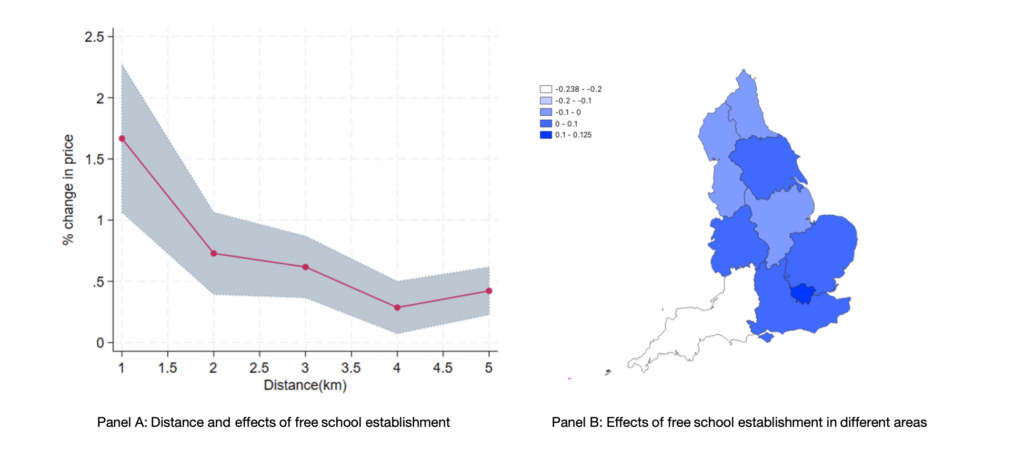In this case study we hear from Zhenyi Zhai, a PhD student in Economics, who has been making use of BlueBEAR to enable her research into the impact of free schools on neighbourhood house prices.

My research explores how the establishment of free schools in England affects the neighbouring house prices. My analysis is based on the method of difference in differences using panel data. To test how educational resources affect real estate, I constructed a dataset on property transactions and school attributes from 2011 to 2019 in England. The total number of observations is over two million. Due to the large scale of the sample, BlueBEAR’s high-performance computing (HPC) service is important for my research.
My recent project aims to investigate the impacts of newly built free schools from three aspects. First, I explore the dynamic effects of the establishment of free schools on property prices in the surrounding areas. I study how house prices change five years after the school is built. Second, I test whether the impact of school construction on house prices is related to distance. Finally, I divide England into 9 regions to study whether the impact of free schools on house prices varies in regions.

The figures above report the results of heterogeneous analyses from different subsamples. In Panel A, the surrounding house prices significantly increase from 5km to 1km. When the distance of the experimental group reduces, the growth of the surrounding housing prices increases. Panel B shows the results from nine different regions of England. The impact of free schools on house prices varies in different areas. For example, in London, East of England, and Yorkshire and the Humber, the impact of free schools on house prices is significantly positive. In other areas, such as the North East, North West, and South West, the impact of free schools on house prices is significantly negative. The impact of free schools on house prices in East Midland and West Midland is not significant. This can be attributed to the different emphasis on education in different regions. The public has different value preferences for free schools in different areas, and this preference is reflected in house prices.
BlueBEAR provides service with large memory and powerful parallel computation capacities, which makes the whole process more efficient
Investigating the effect of free schools on the surroundings requires matching the locations of the newly established schools and neighbouring properties. This demands sufficient computational resources from BlueBEAR’s high-performance computing (HPC) service. First, I use the power of BlueBEAR to collect and process data. Due to the huge amount of observations, processing samples using the original computational method is time-consuming. BlueBEAR provides service with large memory and powerful parallel computation capacities, which makes the whole process more efficient. Secondly, I utilise it for estimations and analysis of data. BlueBEAR allows us to run several regressions at a time with millions of observations. With this multi-core high-performance computer, I no longer need to worry about time costs and data storage anymore. In conclusion, the substantial memory and parallel-processing capabilities provided by BlueBEAR’s HPC service play a pivotal role in my research and I believe it can help with economic studies in other areas.
We were so pleased to hear of how Zhenyi was able to make use of what is on offer from Advanced Research Computing, particularly to hear of how he has made use of BlueBEAR HPC and its many cores – if you have any examples of how it has helped your research then do get in contact with us at bearinfo@contacts.bham.ac.uk. We are always looking for good examples of use of High Performance Computing to nominate for HPC Wire Awards – see our recent winners for more details.
